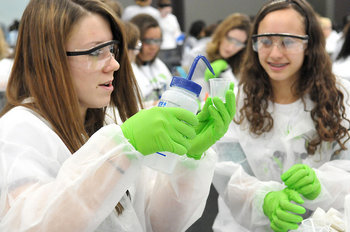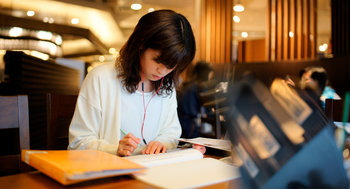Education Related Guides
Related Topics
| |
A learning style is a mode of learning that an individual prefers, uses or finds more productive. This is tied to the idea that teaching should be tailored to the individual. The theory of learning styles has been aggressively promoted since the 1970s and represents an industry onto itself with a large number of books and teachers conferences devoted to the idea. The theory of learning styles is contested on the grounds that customization of learning styles doesn't appear to improve learning outcomes.1 Nevertheless, it is a popular and persistent idea. The following are commonly types of learning style.Learning with social process such as conversation and group work.Solitary LearningQuietly learning on your own such as reading materials and applying critical analysis and composition.Verbal LearningLearning with words including spoken language and thinking with words.Visual LearningLearning with visual information such as diagrams, charts and media. This is related to visual thinking and the ability to think in pictures such as an individual who can't explain a complex topic well without drawing something.
Kinesthetic LearningLearning with physical processes such as building a model with your hands.Cognitive Learning The use of ordered and systematic thinking processes such as analysis, critical thinking and logic.Affective LearningLearning directed towards emotions. For example, gaining a feeling for a topic.Are Learning Styles a Myth?
It is common for students to profess a preferred style of learning and different modes of learning certainly exist. The main criticism of learning styles is that adapting to student's supposed style doesn't appear to improve learning outcomes.2 Other possible criticisms include:
Education systems have adopted learning styles as a basic assumption and approach despite a lack of evidence that this makes sense.
Metacognition, the process of thinking about thinking, has clear benefits for students and teachers without a need to label each student with a style.3
Teaching a student in a preferred style may disadvantage the student later when they need to adapt other modes of learning in the real world. For example, allowing a student with a solitary learning style to skip group work leaving them unprepared for meetings and other cooperative work later in life.
Using a broad range of modes of learning for each topic is likely to produce better outcomes.
Adapting the mode of learning to the topic as opposed to the student is likely to produce better outcomes.|
Type | | Definition (1) | A mode of learning that an individual prefers, uses or finds more productive. | Definition (2) | Preferred methods of discovery, processing and retention of knowledge. | Related Concepts | |
Learning
This is the complete list of articles we have written about learning.
If you enjoyed this page, please consider bookmarking Simplicable.
Footnotes1. Chick, Nancy. "Learning styles." Vanderbilt Center for Teaching (2016).2. Chick, Nancy. "Learning styles." Vanderbilt Center for Teaching (2016).3. Askell-Williams et al. ‘What happens in my university classes that helps me to learn?’, 2007ReferencesChick, Nancy. "Learning styles." Vanderbilt Center for Teaching (2016).Askell-Williams, H., Lawson, M. & Murray, Harvey, R. (2007). ‘What happens in my university classes that helps me to learn?’: Teacher education students’ instructional metacognitive knowledge. International Journal of the Scholarship of Teaching and Learning, 1. 1-21.Newton, Philip M. "The learning styles myth is thriving in higher education." Frontiers in psychology 6 (2015): 1908.
A list of common academic strengths.
A glossary of learning terms.
An overview of common education goals.
The definition of spaced practice with examples.
The definition of the space effect with examples.
The definition of the forgetting curve with examples.
A list of common learning skills.
A list of foundational academic skills.
A list of common learning outcomes.
A list of common types of education.
A list of common study skills.
A list of studying techniques that may boost productivity.
The definition of cramming with examples.
A list of common academic weaknesses.
The definition of digital literacy with examples.
TrendingThe most popular articles on Simplicable in the past day.
Recent posts or updates on Simplicable.
Site Map
© 2010-2023 Simplicable. All Rights Reserved. Reproduction of materials found on this site, in any form, without explicit permission is prohibited.
View credits & copyrights or citation information for this page.
|

























